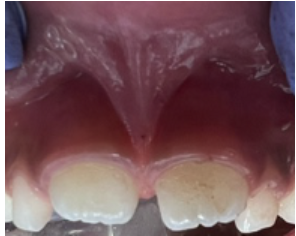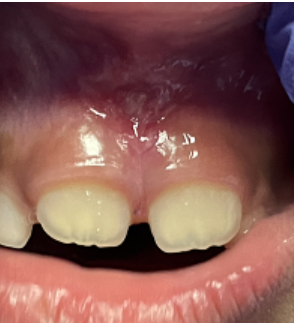Tongue and Lip Tie
Tongue-tie is a birth defect that occurs when the strip of skin (lingual frenum) connecting a baby’s tongue to the floor of their mouth is shorter than usual. Typically, this strip of skin separates before birth, allowing the tongue free range of motion. With tongue-tie, the lingual frenum remains attached to the bottom of the tongue.
Tongue-tie is a very common condition that, if addressed quickly, will not hinder a child’s development. However, if left untreated, tongue-tie can result in malnourishment, speech difficulty, or poor oral hygiene.
Signs of tongue-tie include:
- Restriction of the tongue’s movement, making it harder to breastfeed
- Difficulty lifting the tongue up or moving it from side to side
- Difficulty sticking the tongue out
- The tongue looks notched or heart-shaped when stuck out
-
Trouble articulating certain letter sounds including “R”, “L”, “S”, “N”
-
Feeding issues including:
- Increased gagging
- Avoidance of certain texture
- Very slow eating
Treatment of Tongue-Tie
The treatment of tongue-tie for infants and children is a simple surgical procedure called a frenectomy. We are now offering laser frenectomies for tongue ties and lip ties using the Light Scalpel laser.
Since there are few nerve endings or blood vessels in the labial/lingual frenum, only a local anesthetic is used for the frenectomy procedure. Advantages of a laser frenectomy include: minimal bleeding, minimal post operative swelling and discomfort, decreased risk of infection post operative, shortened procedure time (less than 10 minutes), and faster recovery (less than 5 days).
Patients also do not require stitches post operatively. Depending on the age of the patient, speech/myofunctional therapy may be necessary following the frenectomy procedure. Many of our patients have experienced improvements in feeding, speech and sleep within 1 week of the procedure.
Before & After




